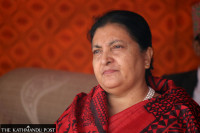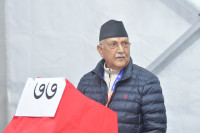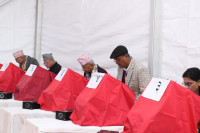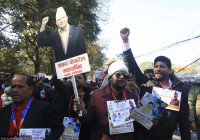Politics
Independents are widening their reach
Rising public frustration stemming from the failure of traditional parties is cited as the main fuel for independent candidates.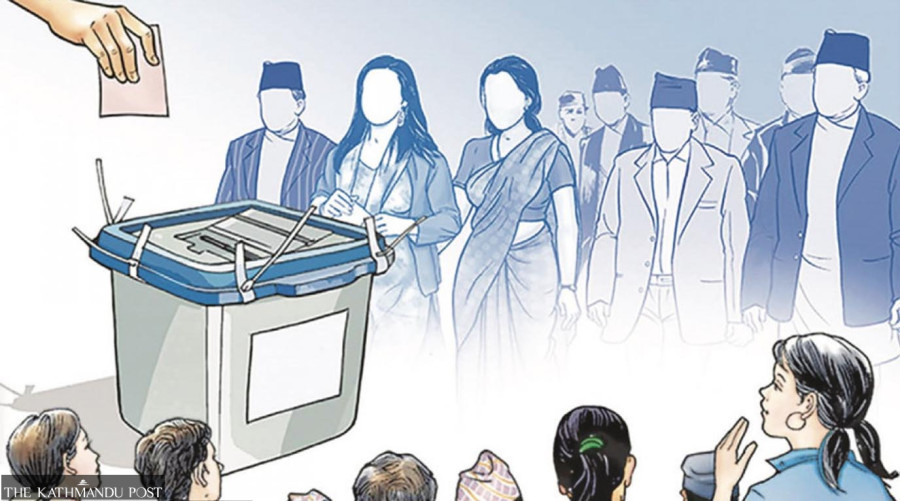
Nishan Khatiwada
Some independent candidates’ landslide victories in major cities in the 2022 local elections have encouraged many others to contest the November polls.
Independent candidates—Balen Shah and Harka Sampang Rai—stole the show after they emerged victorious in Kathmandu and Dharan, respectively. Both had fought under the popular election symbol Lauro—a stick.
The success stories of independent candidates in local elections have led to a surge in independent candidacies nationwide for the upcoming major polls. They are thus at the centre of the current political discourse.
On September 18, 10 independent candidates in the Gandaki Province announced they would contest the elections under the ‘Lauro Abhiyan’.
Suman Sayami, the coordinator of the Abhiyan, said a total of 70 independent candidates had been confirmed for the upcoming federal and provincial polls. “As many as 200 will be in the fray from across the country,” he told the Post.
According to him, of the many aspiring to contest the elections as independents under the movement, they are selecting only those with a prospect of long-term delivery.
“Merely fielding candidates is not enough, we need to field the right and capable ones,” Sayami said. “The national electoral policies also ignore independent candidacies as we are not allowed to vie from the proportional representation category.”
Dambar Shahu, coordinator of the Swatantra Ummedwar Abhiyan (‘independent candidates campaign’) started five months prior to the 2022 local elections as well as other members of the movement, are currently travelling across the country gathering independent candidates and making election plans.
“We are now heading for western Nepal, discussing and making plans with aspiring independent candidates. Many people have shown an interest in contesting as independents,” Shahu told the Post. According to him, more than 100 candidates will be in the fray as independents under their campaign. He said fewer independent candidates have emerged in the Himalayan and Hill regions compared to their participation in urban and Tarai regions.
The Election Commission has set October 9 as the deadline for the parties to nominate their candidates under the direct election system.
With this, many independent candidates are lining up to challenge the old and tested political leadership.
“New, young and energetic faces should come forward in politics as the old and traditional parties have failed to deliver. Despite the same political leaders repeatedly enjoying power for decades, there has been no improvement in people’s lives,” Shahu said. “It’s high time the youths came forward and joined politics.”
Observers say rising frustration among the public due to the failure of the traditional political parties to live up to their expectations is mainly responsible for the popularity of independent candidates.
Indra Adhikari, a political analyst, said as political parties have not been honest with the people and are themselves mired in conflicts and vested interests, independent candidates are challenging them. “The parties are not prioritising the nation and the people, leading to frustration. The aspiring independent candidates might believe they can garner votes from the frustrated masses.”
But it’s easier said than done, observers say, as November polls are different to the local elections.
Even our election system favours political parties over independents, said Adhikari. “Independent candidates are barred in the PR category. Even if some win direct elections and make it to Parliament, their voices could have little or no effect,” she told the Post.
The House of Representatives is 275-member strong where 110 members are elected under the proportional representation system and 165 members come from the first-past-the-post system. Similarly, 550 members for the seven provincial assemblies are elected—330 under the direct elections and 220 under the PR category.
According to Adhikari, in a multiparty democracy, the alternative to political parties are political parties themselves. However, it is also a time to test independents. “Challenging the old leadership to make course-correction is also something good.”




 16.12°C Kathmandu
16.12°C Kathmandu
